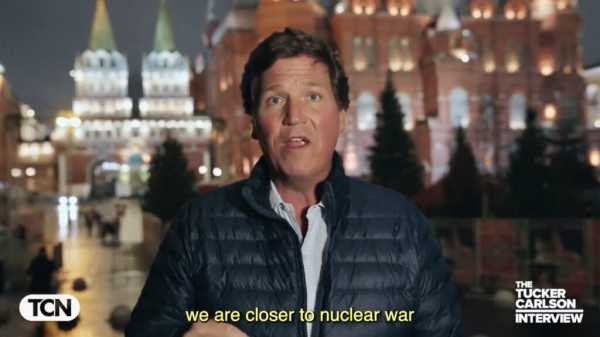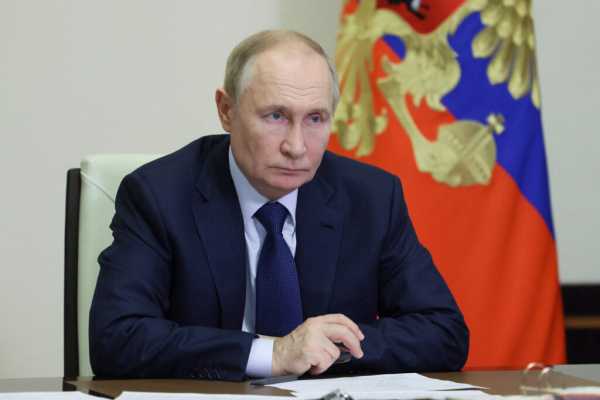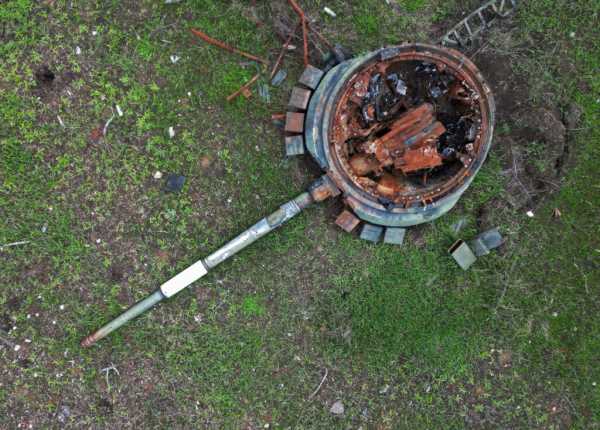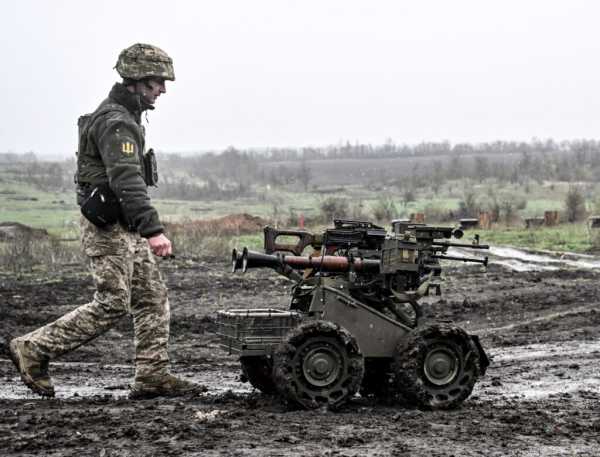
American media personality Tucker Carlson returned to Moscow this week to interview Russian Foreign Minister Sergei Lavrov and sound the nuclear alarm. This is Carlson’s second trip to the Russian capital in 2024, and follows his high-profile interview with Russian President Vladimir Putin in February. On that occasion, Carlson said his intention was to give Putin a platform to explain his reasons for invading Ukraine. This time, he appears intent on highlighting the prospect of a direct clash between Russia and the United States. “We are closer to nuclear war than we have ever been in history,” Carlson commented in a promotional video preceding Lavrov’s interview.
From Russia’s perspective, the timing of Carlson’s visit and his message about an impending nuclear apocalypse is, to put it mildly, opportune. In recent weeks, the United States has granted Ukraine the right to use U.S.-supplied missiles against military targets inside Russia, despite months of increasingly direct nuclear warnings from Russian officials. Unfortunately for the Kremlin, it appears that Putin’s nuclear bluff has been called too often, and his threats are now seen as empty. In such circumstances, it is easy to see why Moscow would welcome Carlson’s visit.
While the details of Carlson’s latest mission to Moscow are still unknown, many have been quick to claim that the main purpose of his visit is to increase Putin’s nuclear blackmail. “Every day I watch Russian pundits on state television complaining that Americans are not afraid of Moscow’s nuclear threats and wondering what they can scare us with to dissuade Americans from supporting Ukraine,” commented prominent Kremlin media monitor Julia Davis. “That’s why Tucker is in Moscow.”
Nuclear intimidation has been a central element of Vladimir Putin’s strategy as he sought to deter the West from helping Ukraine after Russia invaded in February 2022. In his first address announcing the decision to invade, Putin warned that any Western intervention would be met with a nuclear response. Three days later, he underscored the message by putting Russia’s nuclear forces on high alert.
Since then, Putin has continued to engage in nuclear warfare on a regular basis. In September 2022, he vowed to defend Russia’s recent gains in Ukraine with the country’s massive nuclear arsenal. “I’m not bluffing,” he said. In the spring of 2024, he ordered nuclear exercises after French President Emmanuel Macron raised the possibility of deploying troops to Ukraine. More recently, Putin unveiled a revised Russian nuclear doctrine and said that any decision to allow Ukraine to launch long-range strikes on Russian territory using Western weapons would mean the West was “at war” with Russia.
For much of the current war, Putin’s nuclear sabre-rattling has proven effective, allowing him to restrict the flow of military aid to Ukraine and place constraints on Kyiv’s ability to defend itself. But there are growing signs that Western leaders are no longer prepared to be bullied. Arguably, this is long overdue. After all, since the first months of the Russian invasion, Ukraine has consistently demonstrated a willingness to call Putin’s bluff and repeatedly crossed Russian red lines without provoking a nuclear response.
In November 2022, Ukrainian forces liberated the key southern city of Kherson, just weeks after Putin declared it “forever Russian.” Despite this highly personal humiliation, the Russian ruler did not reach for his nuclear briefcase. Instead, he ordered his defeated troops to quietly retreat across the Dnieper River. Likewise, when Ukraine challenged Putin’s authority in the occupied Crimean Peninsula by sinking or disabling about a third of Russia’s entire Black Sea Fleet, he chose not to escalate the situation and withdrew most of his remaining warships to the safety of Russian ports.
The biggest blow to Putin’s scare tactics came in August 2024, when Ukraine crossed the reddest of all red lines by invading Russia itself. Tellingly, Putin’s response to the first foreign occupation of Russian territory since World War II was to downplay Kyiv’s bold offensive. Instead of trying to rally his countrymen against the invader, Putin dismissed Ukraine’s invasion as a mere “provocation” and ordered Kremlin media to convince domestic audiences that the presence of Ukrainian troops on Russian soil was “the new normal.”
In recent weeks, the Kremlin has sought to counter its crumbling nuclear credentials by demonstrating a willingness to escalate. Following the U.S. decision to allow long-range attacks on Russian territory, Moscow launched an experimental nuclear-armed ballistic missile at a city in central Ukraine. But the stunt failed to persuade Western officials to reconsider their position, and Ukrainian airstrikes against Russian targets have continued. Citing four unnamed Kremlin officials, The Moscow Times called the launch a “propaganda operation” designed “to put the Americans and the British in their place and scare Berlin and other Europeans into submission.”
It remains to be seen whether Tucker Carlson’s timely intervention will lead to a revival of Western paralysis in the face of Russia’s nuclear arsenal. Putin’s ability to intimidate the West with nuclear threats has been his greatest success of the war, but the approach is clearly no longer producing the desired results. If Western leaders can now convince the Kremlin that they have finally overcome their fear of escalation, it might help persuade Putin to engage in meaningful negotiations for a sustainable peace agreement. Crucially, it would also send a powerful signal to other potential aggressors that nuclear sabre-rattling does not work and will be met with a decisive response.
Peter Dickinson is editor of the Atlantic Council's UkraineAlert service.
Source: Source



